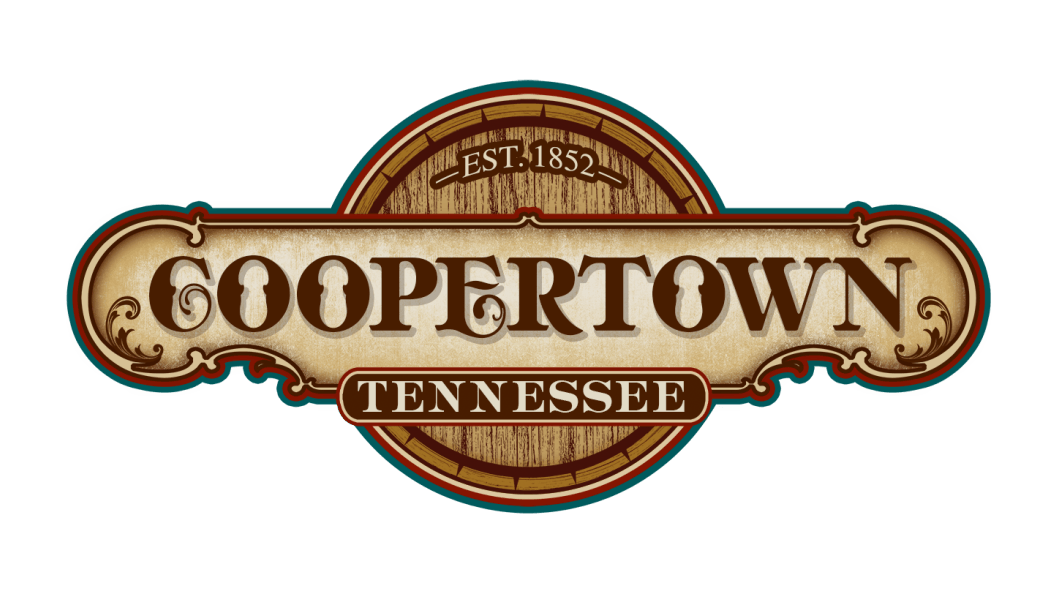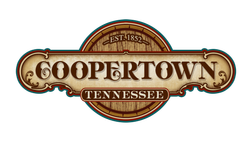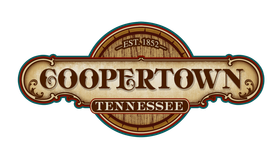History of Coopertown
Robertson County was created in 1796 from Tennessee and Sumner counties. It was named in honor of James Robertson, who was the founder of the Watauga and Nashville settlements. Coopertown had an impact on the State of Tennessee even before statehood. In the late 1700's during the settlement days of present day Nashville, the James Robertson party made their overland trip to the banks of the Cumberland River. Members of Robertson's party were some of Coopertown's earliest settlers, Caleb and Moses Winters, and members of the Gower family. Caleb Winters hunted up and down the creek valley that bears his name located nearby. Harold Gower, a direct descendent of the Gower families, was a deacon at the later created Battle Creek Church.
"Comforts of Home" by Kelly Armes
The area that was to become the Coopertown community was originally named Nave's Crossroads from David Nave, another who settled here in 1825.
This village was included in the 13th Civil District. Over time the village began to attract business, notably the whiskey and barrel production enterprises.
In the 1800's Robertson County helped to establish Tennessee as one of the major producers of alcohol in the US. It was from this commodity that Coopertown derived its name. There was a large cooper shop that made the barrels for the nearby Red River Mills Distillery. A stage line connecting Nashville and Hopkinsville ran through Coopertown, Turnersville, and Port Royal. In 1850, the Sons of Temperance erected a hall in the community. The building eventually became home to the post office and general merchandise store. In 1886, the major businesses in the Coopertown community were Davis & Son and Hinkle & Glover, general merchandisers; R.G. Glover, drug store; F.M. Watts, steam flour mill; J.J. Reeves, undertaking; Scruggs & Reeves, blacksmithing, S.W. Frey and R.G. Glover, physicians.
By the late 1800's the Union Church of Coopertown was established for nondenominational worship. Battle Creek Baptist, Mt. Zion Methodist, Mt. Sharon Presbyterian and Head's Free Will Baptist were all part owners of the church and each denomination had time to worship. The church served in many capacities, such as a meeting hall and even holding graduation services. In later years, services were discontinued because of much needed repair. In 1961, representatives from each denomination voted to sell the property and divide the proceeds.
With the county seat at Springfield, the Coopertown community became just another farming community in the Robertson County area in the 19thCentury. The availability of prime farmland made for a prosperous lifestyle. However, Robertson County's reputation for whiskey production was fast becoming the number one commodity in not only Middle Tennessee, but even making a name for itself nationwide. The whiskey industry continued to grow in the US right up to the Civil War, gradually becoming concentrated in certain areas of the county. Robertson County, Tennessee was one of those areas. Like many areas of the South, the outbreak of the Civil War did have a major impact on Robertson County and its whiskey reputation. During the war, occupying Union forces banned the distillation of whiskey because corn and other grains were needed to feed both humans and livestock. In Robertson County, distilling was one of the first businesses to start up after Union forces pulled out in 1865.
By 1874, Robertson County distillers were producing 45,000 barrels of whiskey annually. The barrel business that had grown up in the Coopertown community now produced $125,000 in business annually.
By the 1880's, a combination of consolidations and buy-outs of smaller distillers by the competition of larger businesses coupled with mounting pressure from the churches and temperance groups like the Women's Christian Temperance Union and the Anti-Saloon League, the whiskey industry in Robertson County soon faced its demise as a major enterprise. Like numerous other communities, Robertson County's agriculture transitioned from the whiskey business to crop production just as it did in its beginnings. Agriculture developed early as the primary economic activity and remained so until after the 1940's. Cash income from agriculture was derived largely from livestock, tobacco, and grains.
It wasn't until the first decades of the 20th Century that the basis of industrial development for Robertson County began, and with it, the beginning of a new chapter in economic growth. Utilizing the community's local raw materials and the available labor market would become evident to attracting prospective businesses. Most of these activities were on a small scale, with marketing of these and other goods on a local level.
Even with the Great Depression years of the 1930's, the growth of Robertson County's economy was very moderate. Although during this period many people returned to the farming lifestyle, the slowdown in industrial and non-agricultural sectors was temporary. The whirlwind of World War II signaled a jump start in the local economy as well as the nation's economy as a whole. With the location of new industries in the county as well as an expansion of the older ones, more jobs became available and the county began to experience more rapid growth. Employment opportunities, however, were more plentiful in the larger urban areas in the Southeast US as well as nationwide, and caused a migration of the local workforce to relocate to these wartime jobs. The only work force to show reduction in labor force was agriculture.
The migration to more local cities occurred in Robertson County beginning in the early 1950's. Springfield, being the county seat, already had a manufacturing base with the tobacco and woolen industries. It was the creation of an industrial board with strong leadership that attracted the new industries and their sought-after jobs. Businesses like Southern Heel Company and Acme Boot Company, which specialized in shoes, came in the early 1950's. These were followed by Wilson Sporting Goods in 1953 and Unarco Steel in the 1960's. The creation of the South Industrial Park in the 1980's and North Industrial Park in the 1990's established Springfield as the hub for manufacturing activity, with many of the traditional agricultural workforce leaving the farms to seek out those jobs.
Another vital feature that attracted population migration and industrial growth was the introduction of the nation's Interstate Highway System. Conceived by President Dwight Eisenhower in the 1950's, the interstate system was seen as a better way for overland travel, expansion for the general population and the business sector as well as for national defense. Robertson County got the benefit of receiving not one but two interstate highways: I-65 and I-24. I-65, which runs in a north-to-south fashion, was completed first in the early 1970's. I-24, which runs in a northwestern-to-southeastern fashion, was later completed in the later 1970's.
Coopertown did not achieve status as an incorporated town until 1996 when the citizens of the community held a referendum and voted to become a town. This decision to become a municipality came as a response to a threat of a landfill attempting to locate in the community. The citizens believed that only as a municipality could it prevent a use like the landfill from being located in the heart of the community.


